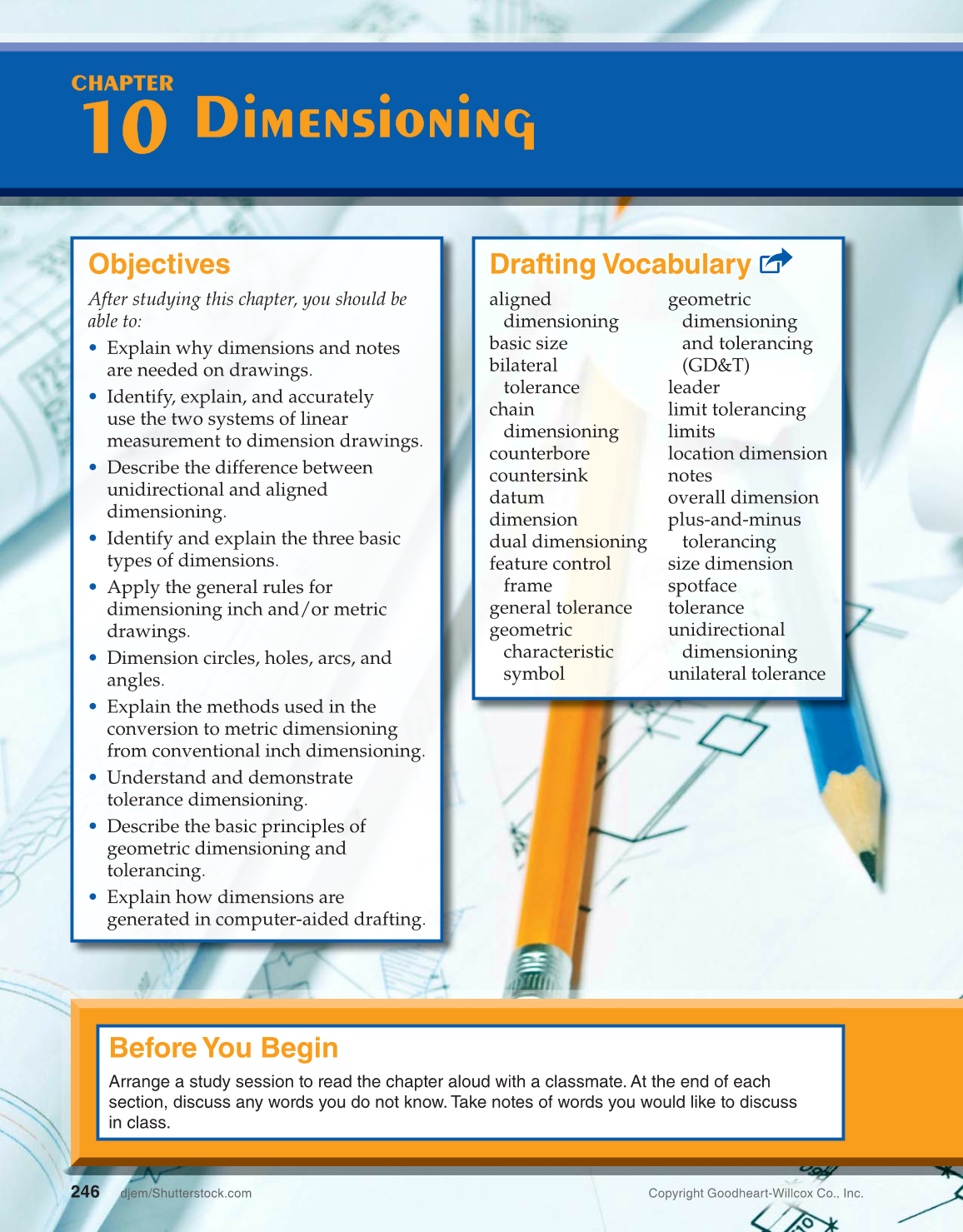246
djem/Shutterstock.com
Before You Begin
Arrange a study session to read the chapter aloud with a classmate. At the end of each
section, discuss any words you do not know. Take notes of words you would like to discuss
in class.
Objectives
After studying this chapter, you should be
able to:
• Explain why dimensions and notes
are needed on drawings.
• Identify, explain, and accurately
use the two systems of linear
measurement to dimension drawings.
• Describe the difference between
unidirectional and aligned
dimensioning.
• Identify and explain the three basic
types of dimensions.
• Apply the general rules for
dimensioning inch and/or metric
drawings.
• Dimension circles, holes, arcs, and
angles.
• Explain the methods used in the
conversion to metric dimensioning
from conventional inch dimensioning.
• Understand and demonstrate
tolerance dimensioning.
• Describe the basic principles of
geometric dimensioning and
tolerancing.
• Explain how dimensions are
generated in computer-aided drafting.
Drafting Vocabulary
aligned
dimensioning
basic size
bilateral
tolerance
chain
dimensioning
counterbore
countersink
datum
dimension
dual dimensioning
feature control
frame
general tolerance
geometric
characteristic
symbol
geometric
dimensioning
and tolerancing
(GD&T)
leader
limit tolerancing
limits
location dimension
notes
overall dimension
plus-and-minus
tolerancing
size dimension
spotface
tolerance
unidirectional
dimensioning
unilateral tolerance
Dimensioning Dimensioning
CHAPTER CHAPTER
10
Copyright Goodheart-Willcox Co., Inc.
